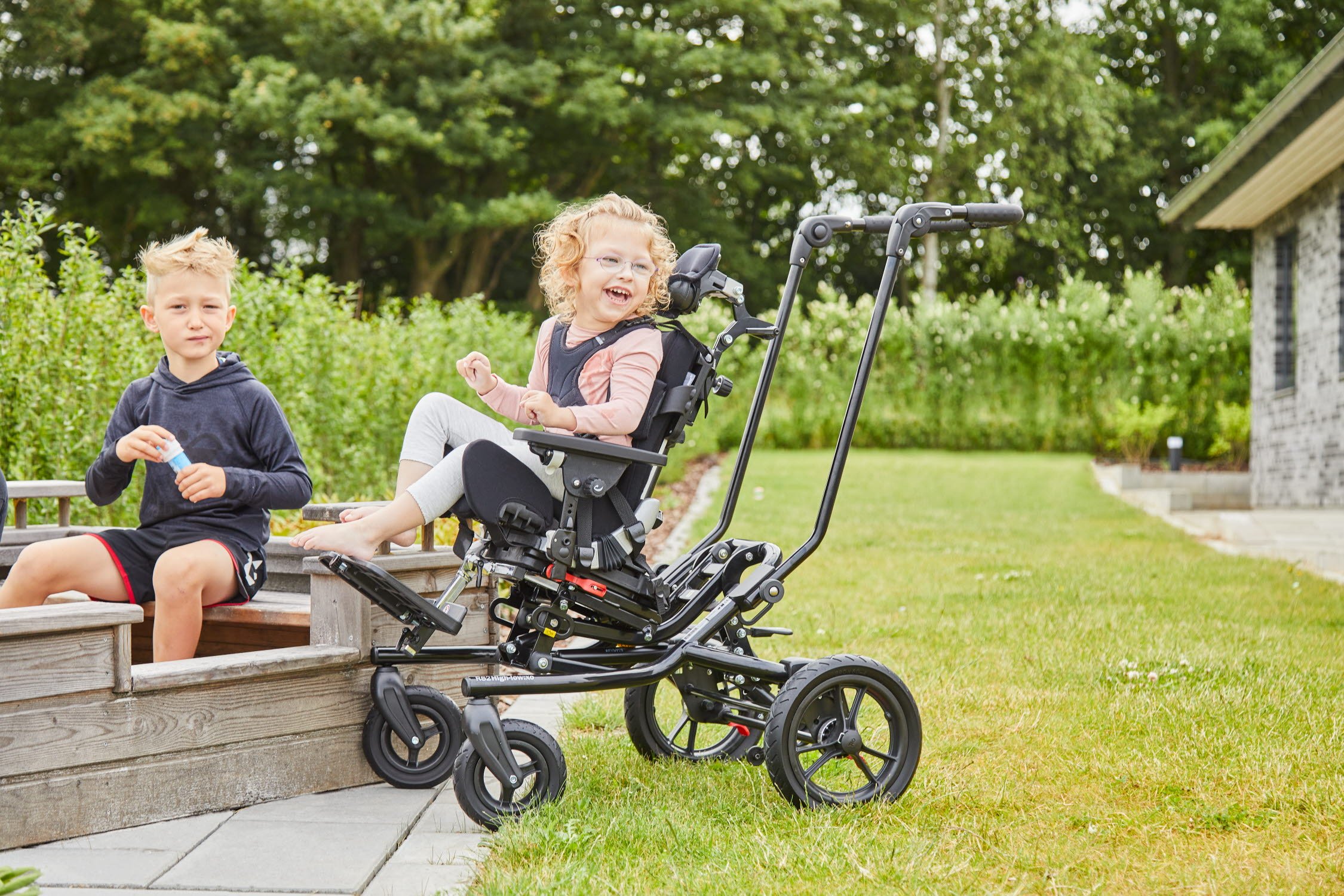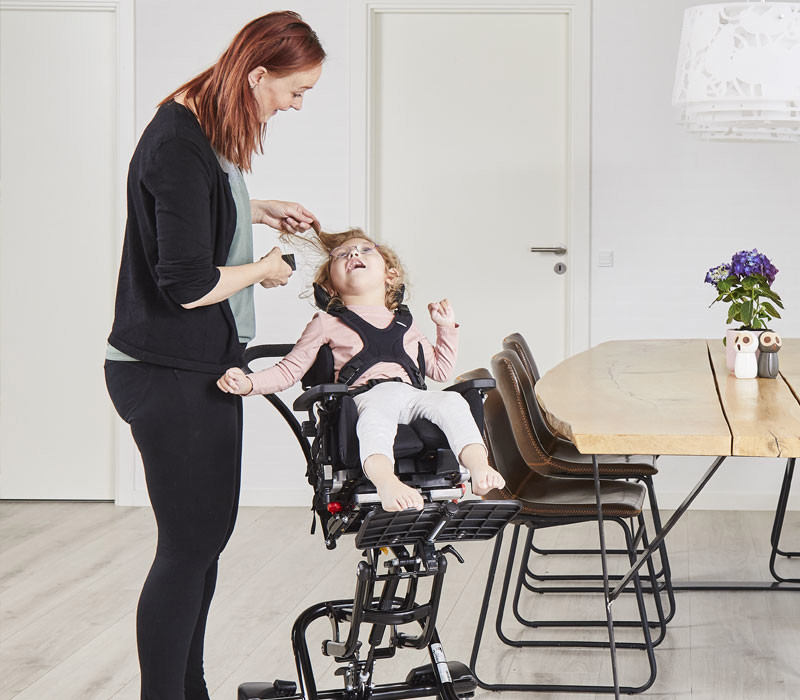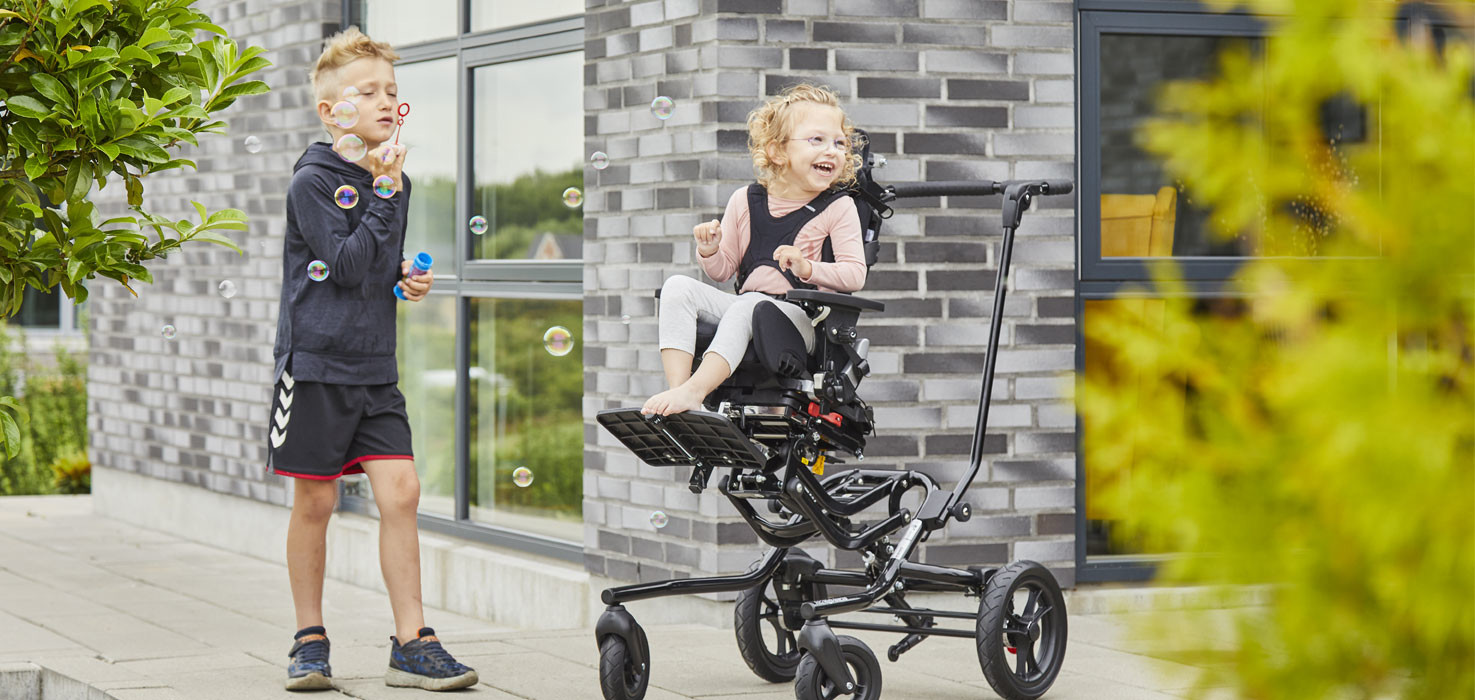Height adjustment
Adjustment of the height of an office chair is used to ensure as good a working condition as possible for the user, while having the feet supported on the floor. For children with disabilities and their caregivers the function enables the user to be positioned at the same height as typically developing peer, or to be positioned in a height that allows the caregivers to support them with various daily tasks. For the caregivers this can be done without compromising their own work condition by having to reach for the user, to bend over or stand raised on their feet.
Typically developing children will from around the age of 9-12 months use a large range of different seated positions; long leg sitting on the floor playing with toys, squat down to pick up toys from the floor, tall kneel or one-half kneel, when adjusting their height to a small table and apply a range of different furniture’s to meet their need for support and positioning: working chair, highchair, couch, armchair, and car seat.
For children with disabilities one or a few product solutions need to be available to compensate for their health condition and any limitations in body function and at the same time allow them to join in with their friends and family.
The High-low:xo aims to mimic as many of the different seat heights as possible to enable the child to use the seating system in a large range of different heights from the floor to table height.
Being able to adjust the height and tilt of the seat during standing or seated transfer, might be that little extra that enables the user to be active during transfer to and from the seat, either independently or by means of a caregiver or an assistive device for transfer.


The needs of the user and the possibilities will be the most important when making a clinical decision about medical devices. It is also well accepted that medical devices are of importance to and might impact the caregivers and families. When it comes to the perspectives and priorities of the caregivers, it is very relevant to consider the High-low:xo.
The High-low:xo can be able to contribute to ensure good working conditions for the caregivers. This is done by either lifting the smaller user up to the caregiver or lowering the taller user down to the caregiver.
Examples of activities where positioning of the user can ease the work of the caregiver could be:
- Selfcare: eating and drinking, caring for hair or nails or taking footwear on and off at a height where the caregiver can assist without compromising on work conditions.
- Learning and applying knowledge: reading or writing together at a table height suitable for both the user and the caregiver.
These examples are activities, where it can be relevant to discuss daily routines to ensure that the caregiver priorities are included in the clinical decision making.
By acknowledging family and caregivers as important participants in the clinical decision making, it might be possible to find product solutions that increase activity levels of the user and improve the quality of life for the users and their family or caregivers.
